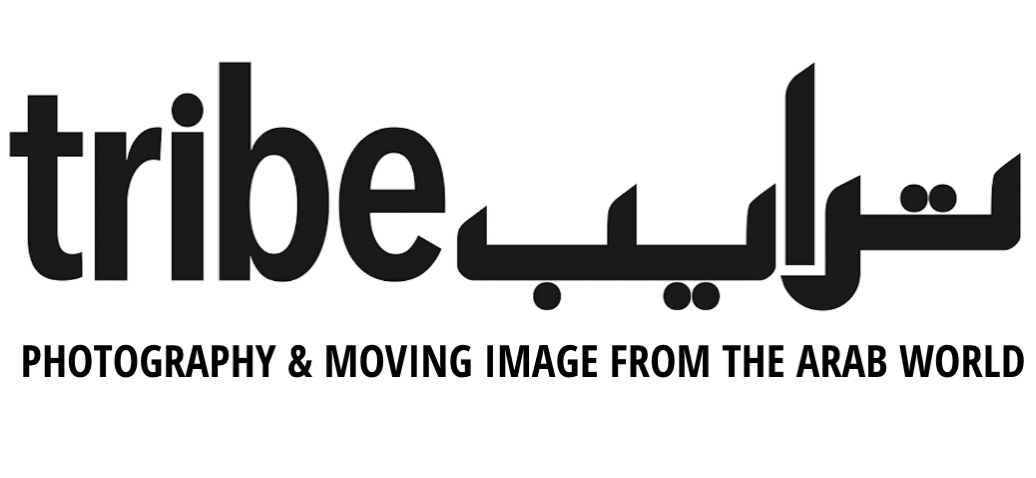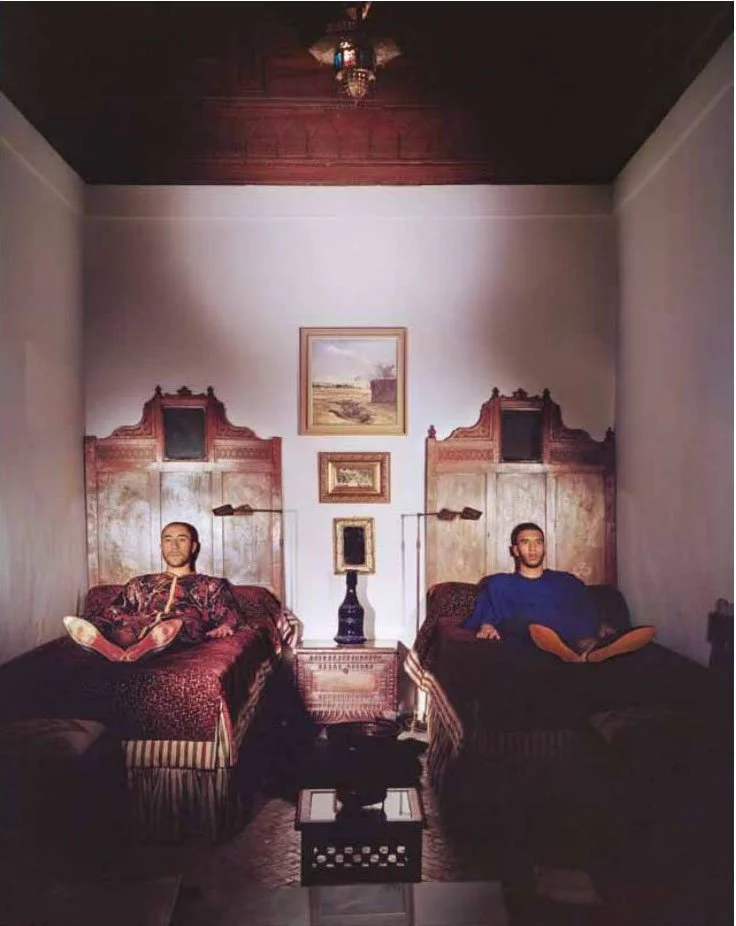Walid Layadi-Marfouk : RIAD
Breaking preconceptions to resonate beyond cultural boundaries
Walid Layadi-Marfouk, Houma Bjouj (Comradeship in Love) (2017) Archival pigment print, 111.8 x 90.2 cm. Courtesy to the artist.
With text by Emma Warburton, arts writer and researcher.
On August 10,2016, the New York Times Magazine devoted an entire special issue to the Middle East and its recent history of conflict and violence. One notable article, the only article in the entire issue in fact, featured a comprehensive timeline of the turmoil the region is infamous for. From the Six-Day war of 1967 in the Sinai peninsula to the freeing of Palmyra from Daesh last summer, the in-depth account is a critically acclaimed and remarkable piece. Its ability to synthesize and clarify some of the most complex issues in the region, and of our time, deserves the highest of praises. Yet, the article is also evidence of an evil that has pervaded the perception of the Middle East in the collective Western mind since before the artist was born. Ever since the mid 90’s, the region-and by association, all Muslim cultures- has chiefly been represented in contexts of violence, religious extremism, war, bigotry and so on. Such depictions have at time been necessary, to catalyze world mobilization in the face of human tragedy. But unfortunately these representations are so prominent that they dwarf all other aspects of Middle Eastern, North African, and Muslim cultures in Western mainstream media. The average American or European asked about Islam is likely to conjure grim images of veiled figures or sandy ruins- strikingly similar, in fact, to the main image featured in the aforementioned New York Times special issue.
Somehow. And tragically, these images have replaced all other possible representations of culture and people of Islam. Abundant histories have been flattened by one sad, continuous narrative. Our attitudes towards Islam have been patterned by the stories we hear, one news report after another. This collective ignorance has spawned a brand of fear that we are all familiar with, however the issue is not simply one of misinformation. If the Middle East, North Africa, and their cultures are almost exclusively pictured in dire conditions, factual enlightenment cannot-will not- suffice to reverse the deadly ideologies and problematic politics that have arisen out of years of mis-education.
Growing up in Morocco, Walid Layadi-Marfouk was fortunate to be surrounded by some wonderful men and women who remain in his life today. He describes these relatives and friends- the people who shaped his upbringing- with admiration and respect. Yet he expresses his disappointment in the inadequacy of language to describe people without limiting them to a type, or an expectation. To the artist, glorifying the word “strong”, for instance, when describing a woman is to suggest that strength for her is a special accomplishment. “In [photographs] women are too often represented as soulful and resigned, sitting, holding their heads or praying- while men are more likely to be shown standing and combative.” Layadi-Marfouk is generally opposed to these oversimplified representations of roles and identities. He finds problems, too, with cultures being represented in the terms and codes of outsiders. Indeed, an argument could be made that certain adjectives and expressions in any given language are necessary to build understanding and empathy between groups. But when a culture is entirely described by an outsider’s codes , it becomes entrapped within in a complex framework of thought that it does not belong to, and it relinquishes ownership of its own identity.
As a young adult educated in Europe and the U.S., Layadi-Marfouk acknowledges that he is partially unqualified to discuss the ‘general muslim experience’ (if ever such a blanket term carried any meaning). But by telling his own story and photographing people close to him, the artist attempts to shift the paradigm and bring diversity to the Western-centric dialogue on Muslim culture and its people.
Riad seeks to present its subjects in Middle Eastern narratives that are unique to them, and that transcend the oversimplified and generic ones on offer in the mainstream media, because “…singular identities are too often mischaracterized or even uncharacterized, and stripped of their own individuality…” The artist uses himself and his relatives as subjects, and pictures them in the ancestral home of his great-grandfather, in Marrakech. Constructing a deeply personal visual language, Layadi-Marfouk tries to separate these individuals from any preconceptions embedded in traditional Western imagery. Shot in an analog 4 x 5 chamber, the images are imbued with intimate, sentimental and emphatic quality, allowing them to resonate beyond cultural boundaries. The work of Riad is a self-contained environment, a reality of its own, an island of autonomy and power in which the audience can perceive a silver of Islamic culture in Morocco the way the artist did and still does.


